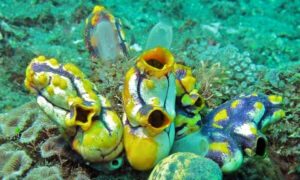Table of Contents
Definition of Deuterostome
A deuterostome is an animal that undergoes an embryonic procedure during which the endometrium is split open. The Deuterostome clade has direct descendants of the Protostomes, forms a major group with the Xenacoelomorpha—a clade that can display bilateral symmetry during embryonic development, and is mostly triploblastic.
Deuteronomy: An introduction
The zygote, formed when the sperm and egg from the male and female fuse, is formed during embryonic development.
A cleavage process is responsible allows zygote to depths process to results in a dense ball of cells called a morula, formed by multiple cells called blastomeres split into multiple pieces morula. In deuterostomes, radial cleavage occurs, whereby the blastomeres are arranged along a central axis and is characterized by several tiers of cells stacked on top of each other.
Deuterostome developments are characterized by radial cleavage as opposed to protostome development, in which spiral cleavage is the defining characteristic.
Also, the developmental fates of individual cells in deuterostomes are not determined in advance. Therefore, if isolated, each cell is capable of developing into a full embryo.
Examples of deuterostomes
· Echinodermata is part of the phylum Echinodermata.
There is a circular nerve cord-like structure behind the pharyngeal slits. There are numerous animal types, including fishes, birds, reptiles, amphibians, and mammals. Slits. There At the larval stage, these animals are bilaterally symmetrical. Radial symmetry is present in adults. These include starfish, sea urchins, sea lilies, and sea cucumbers.
· Chordata is a phylum of animals
The notochord is present in them, while invertebrates, the vertebral column replaces it. The dorsal hollow nerve cord and the pharyngeal nerve cord are present slits. Listed below are some examples: fish, birds, reptiles, amphibians, birds, and mammals.
Deuterostome types

There is a taxonomy grouping for Deuterostomes; three clades are recognized.
1. The Echinodermata
Marine animals called the echinoderms possess radial symmetry in adulthood but display bilateral symmetry in larvae and are thus classified under the group Bilateria.
An endoskeleton made of calcium carbonate surrounds the echinoderms just beneath the surface of its skin, providing enough rigidity to provide protection. Moreover, they have a hydrostatic skeleton, a hollow fluid-filled cavity known as the coelom.
Feed using the stomach extruded out of the mouth of predators to digest their prey, using the tube feet to pry open bivalves. Tube feet are used by Non-predatory species use tube feet for suspension-feeding, in which food is tapped to the cilia and passed into the mouth.
2. The hemichordata
Hemispheric crustaceans, also known as hemichordates, are marine deuterostomes. They consist of three distinct body parts: an anterior prosoma (front), a middle mesosome, and an posterior, metasoma (back).
They are known to be closely related to vertebrates and may be considered the closest living relatives. All hemichordates have a canine dorsal nerve chord, but do not have a notochord, like other chordate deuterostomes.
3. The Chordate
Phylum deuterostomes comprised of chordates, or animals with common characteristics:
It is comprised of notochords. Rods are made from cartilage-like material that is flexible and supportive. The vertebral column replaces this during the development of invertebrates.
An ectoderm-based hollow chord, that runs along the spine of the body, over what is known as the dorsal nerve chord. A vertebrate’s central nervous system is made up of this.
This is what happens after an anal. At least some point in their development they should have a tail that extends beyond the anus.
Which of the following statements about deuterostomes is false?
There are four options:
- Early embryonic development occurs differently in all deuterostomes.
- There are three layers of tissue in all deuterostomes, so they are triploblastic.
- Deuterostomes all have coeloms.
- There is radial symmetry in the bodies of all deuterostomes.
Keeping option 4 in mind, the correct answer is 4. Radial symmetry is present in the bodies of all deuterostomes.
All animals experience some of the same stages of development. In the stages known as cleavage, zygotes undergo a number of cell divisions during this process. It is during this period that blastomeres are formed.
With holoblastic cleavage, animals form a ball of cells called a blastula, the blastoderm layer surrounded by a blastocoel, and the resulting ball of cells can be seen below the surface of the animal.
In the next step, there is gastrogastrulation, where tissue layers are formed which will eventually become organs. Organismgenesis occurs at the end of an animal’s life when it has organs and organ systems.
Animals that are the most primitive are sponges, which have no symmetrical structure and have no tissues. Cnidarians have radial symmetry, and they have two tissue layers. Those animals that are more evolutionarily advanced have developed true body cavities and three issues layers.
It is either deuterostomes with mouths that did not develop from the blastopore or protostomes with mouths that developed from the blastopore.
Read more
In this article, we write the answer of which of the following statements about deuterostomes is false? This blog article writes for you after deep research. If you want to read more content like these topics then click on our website 5elifestyle.com
Learn more: Dissonant Whispers 5e



